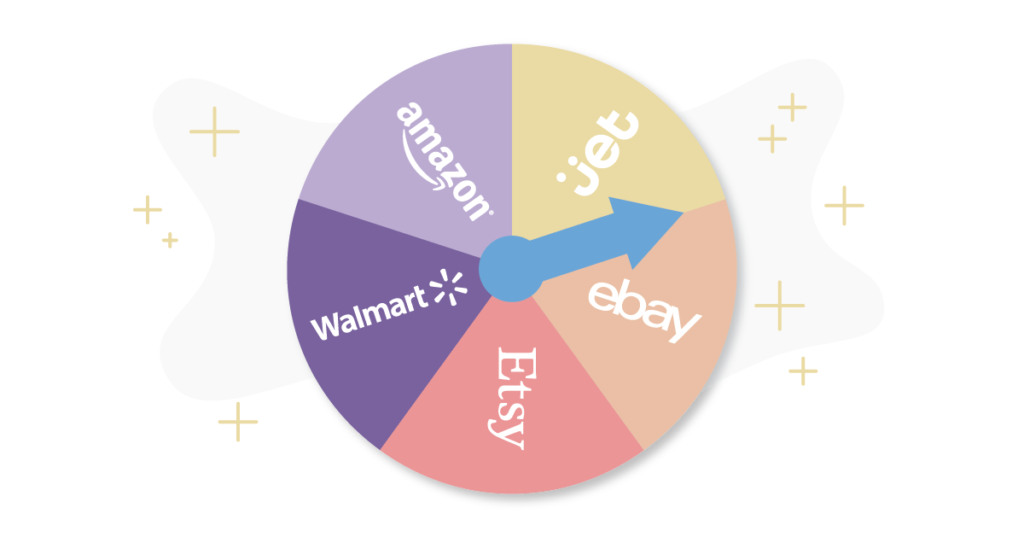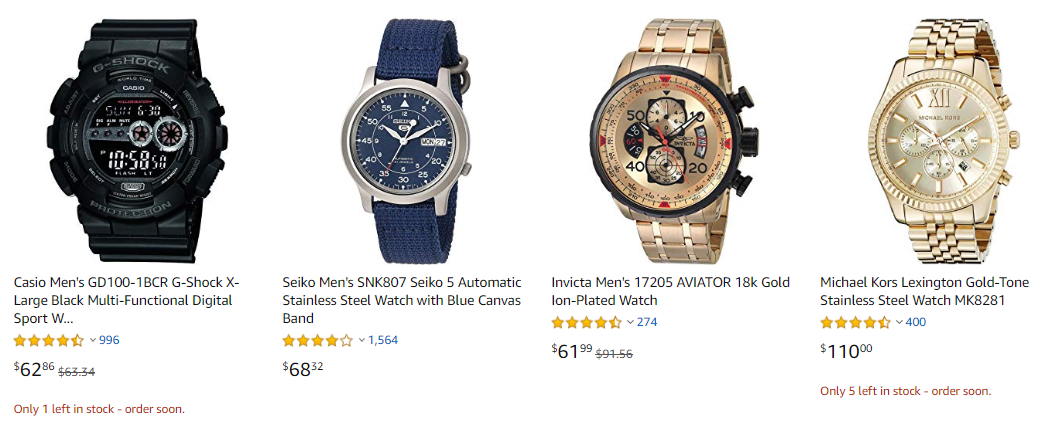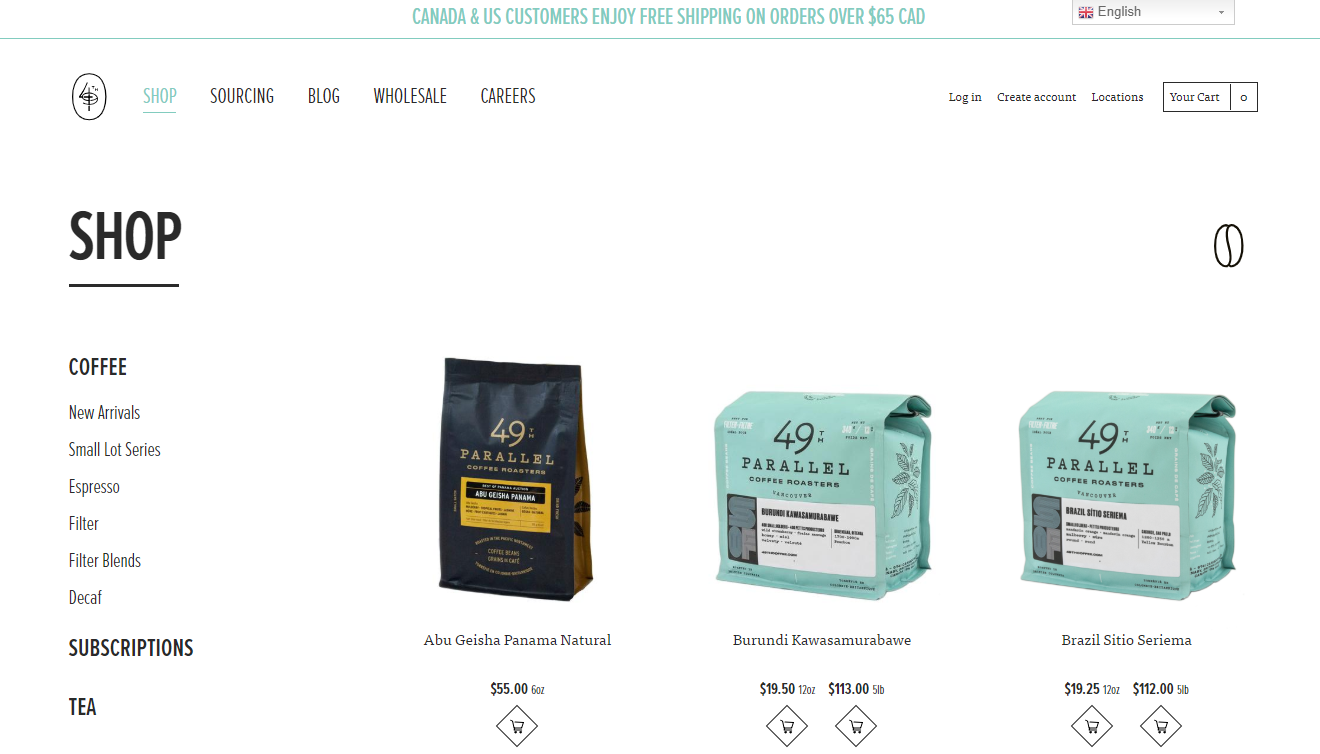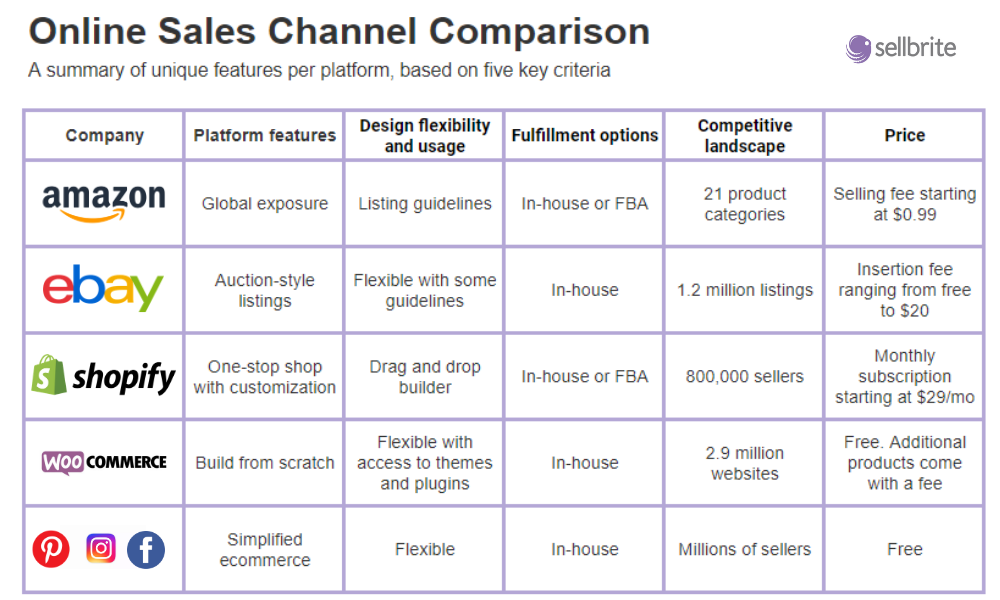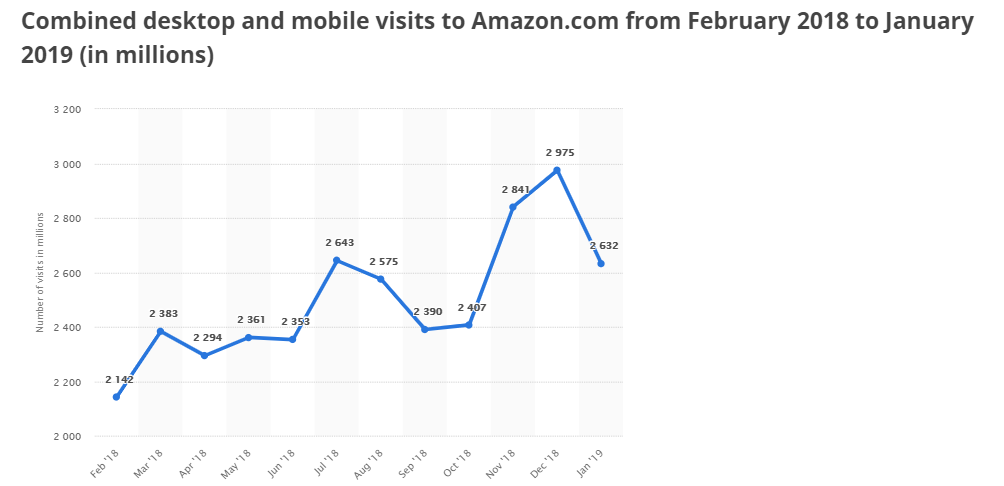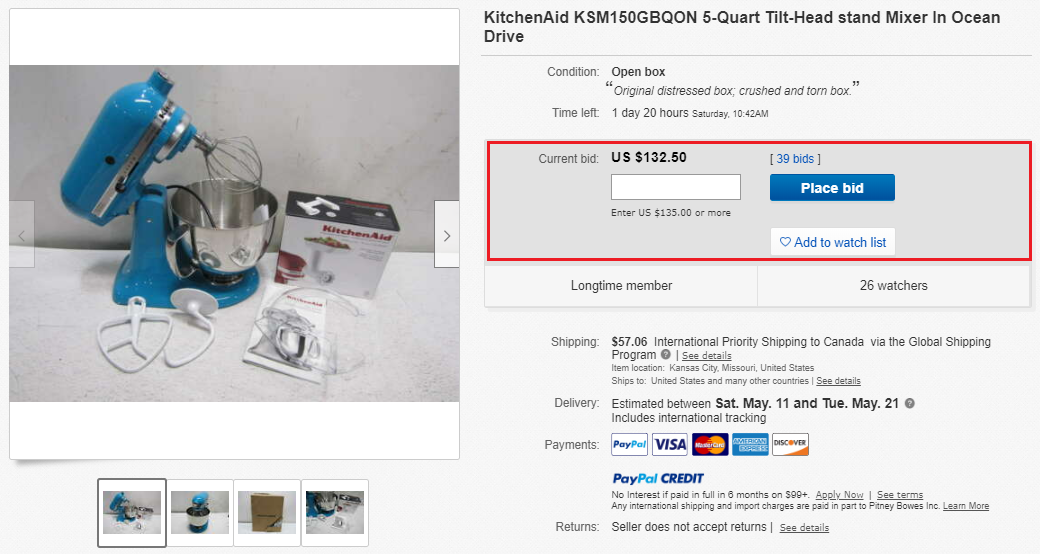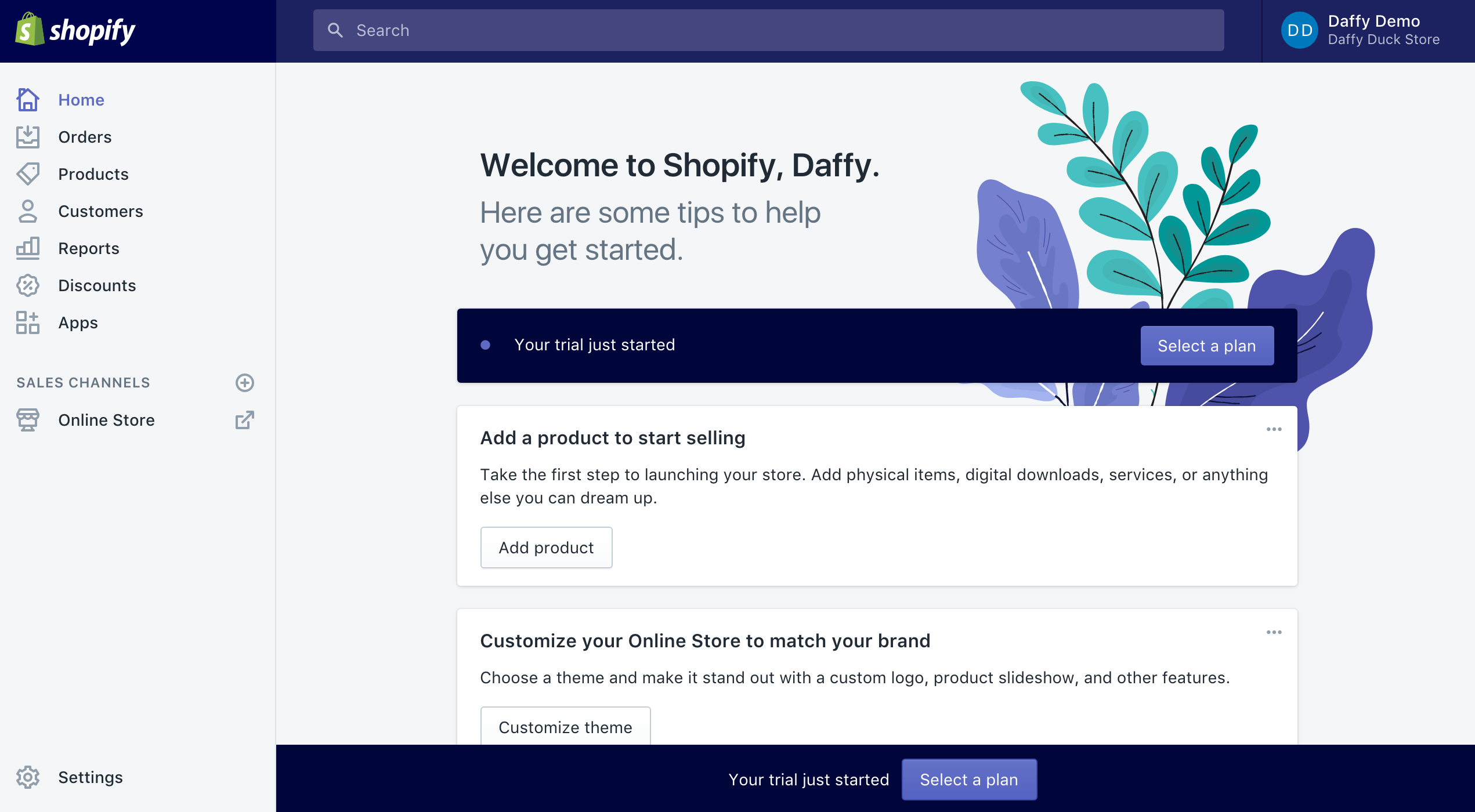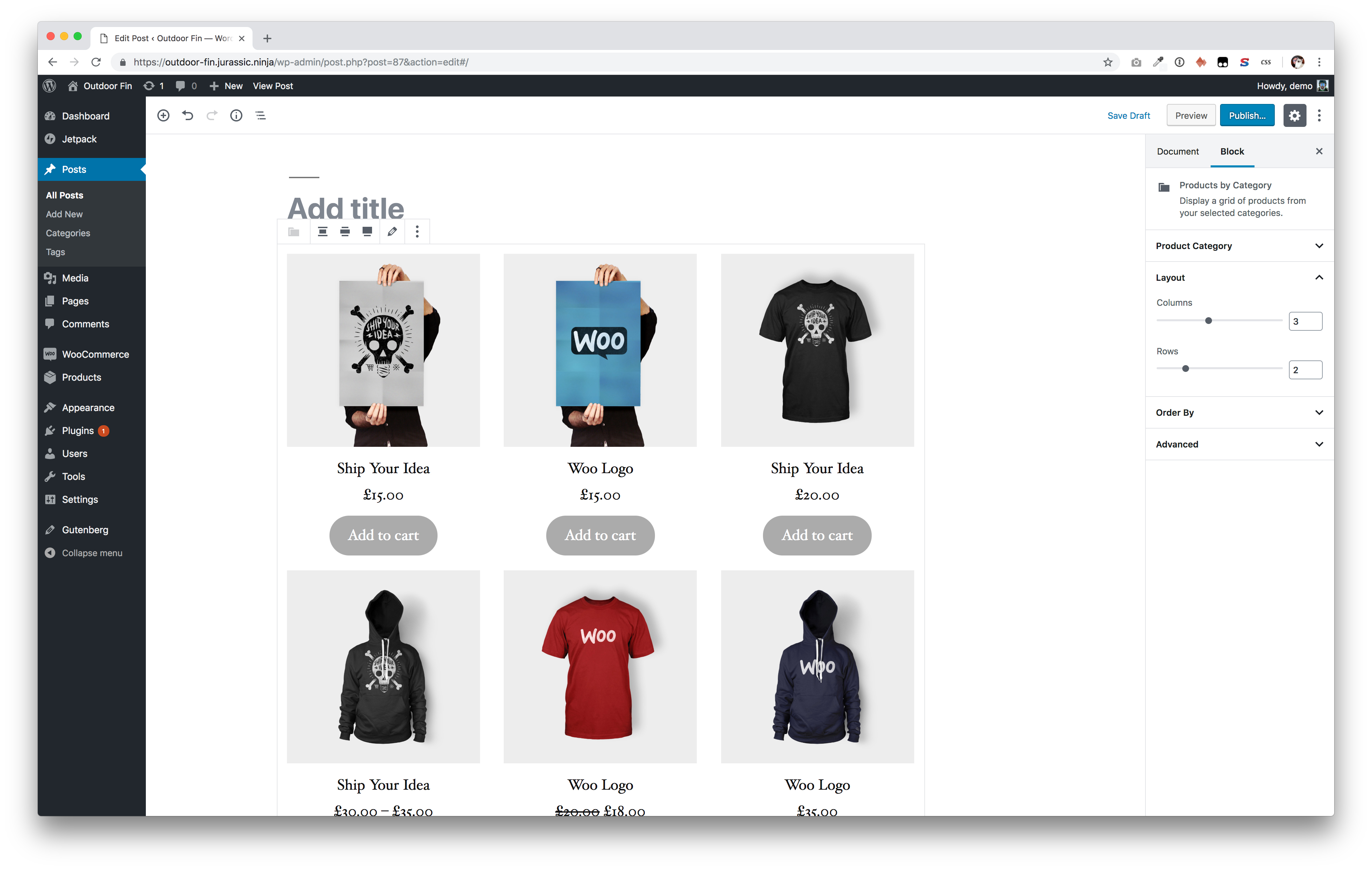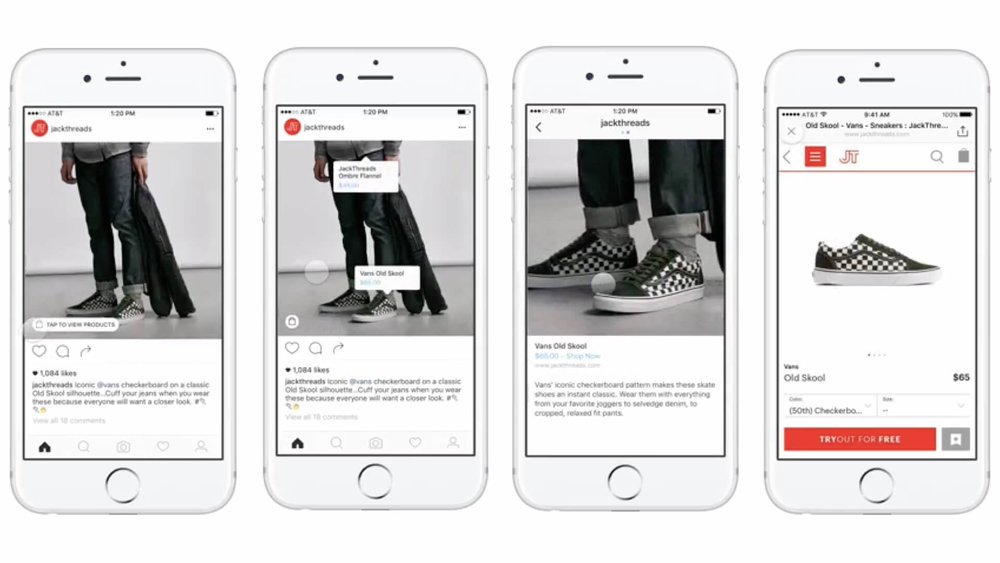Whether you want to sell handcrafted soaps or the latest tech gadgets online, there’s no shortage of sales channels to choose from. From Amazon to WooCommerce, each ecommmerce platform comes with its own set of unique features to help you manage your business well.
There’s only one problem: Some online sales channels offer design templates and fulfillment outsourcing while others offer product auctions and multiple pricing options.
When you’re looking for the right platform, there’s a lot of information to wade through, so we’ve put together this guide to help make your decision process a little easier. You don’t have to settle on a platform because that’s where the masses choose to sell their wares. Instead, you can choose a platform based on your specific needs.
To help you get started, let’s look at how to figure out what you need from an online sales channel and then at how to choose a platform based on these needs.
Create clear objectives to focus your search
Instead of settling for a popular platform, figure out what type of support you need and how you plan to use the platform. For example, some channels use templates to make design simple and to make sure all listings, regardless of the seller, look the same.
These watches are sold by different Amazon sellers, but the listings all look similar. This is based on listing templates that all Amazon sellers have to use.
This might work for you if you want the benefits of having your products listed on a reputable, high-traffic site. But if you want more flexibility to showcase your brand’s unique style, a channel that lets you customize your online store might be a better fit.
[Source] 49th Parallel Coffee uses Shopify to list its products and has the flexibility to use branding to showcase its coffee.
Figuring out your specific, individual needs means your search for an online sales channel is more focused. You’re more likely to find a platform with the right mix of features and support to help you manage your business exactly how you want. For example, if customization is important to you, look for platforms that offer the most design flexibility.
To help you figure out what you need from an online sales channel, here are five key criteria to consider. Each of these will help you compare platforms to find the one that works for you:
- Platform features. Think about what features are important to you. Do you want to manage listings, reporting, and fulfillment in one place, or are you OK with connecting external apps to your store?
- Design flexibility and usability. Think about your skill level and how much energy you want to put toward building and maintaining your store. Are you OK with rolling up your sleeves and building from scratch, or would you rather have a simple drag-and-drop tool?
- Fulfillment options. Think about what types of fulfillment options you need. Depending on the size of your store, do you want to package and mail orders on your own, or do you want to outsource those tasks?
- Competitive landscape. Think about the types of products you’re going to sell. Keep in mind that not all products sell well on all platforms. You want to use a platform that will give you exposure to your target audience.
- Price. Consider how much you want to spend on an online sales channel. Some platforms have monthly subscription fees but give you access to premium features. Other platforms are free, but a lot of brands compete on it.
Based on these needs and any new ones you add, use your answers to compare the platforms you’re interested in. Here are a few examples of how to use this list to compare some of the most popular online sales channels: Amazon, eBay, Shopify, WooCommerce, and social media.
Amazon: The trusted ecommerce leader
Amazon is a platform that lets third-party vendors sell a wide range of products on the platform. It’s seen tremendous growth over the years, becoming the leading online sales channel. Millions of brands use Amazon to sell their products, and in 2018, 19% of professional sellers made more than $1 million is sales. Amazon has become the go-to place for both new and established brands to flock to. This makes sense, considering Amazon had 2.63 billion visits by shoppers in January 2019.
[Source]
But selling on Amazon isn’t all a bed of roses. If you’re just starting out, chances are you aren’t banking millions in revenue — unless you’re selling the next must-have product. For this reason, Amazon is better suited for larger, more established brands that have a strong marketing strategy and lots of traffic to their products.
Does Amazon meet your needs?
- Platform features. Amazon makes selling easy for sellers. For example, if you sell products throughout North America and South America, Amazon lets you select which products customers have access to, based on demographics. With the platform, you can also customize your shipping rates based on where you ship to and can sell products based on their condition — for instance, new, used, refurbished, or collectible.
- Design flexibility and usability. There are strict guidelines for how sellers post their products. All product pages have the same look and feel to create a uniformity across the platform. Even as a third-party seller, your products don’t look any different from Amazon products. If you’re still growing your brand, this feature adds credibility to your products.
- Fulfillment options. You have two options: You can ship orders yourself or take advantage of the Fulfilled by Amazon (FBA) program and have packaging and shipping outsourced. This is helpful if you have a lot of inventory and products sold frequently. FBA also controls quality, so it doesn’t matter how many customers you have — they all have the same experience. FBA also helps you scale your business; some sellers experience a 30-50% increase in sales.
- Competitive landscape. From baby products to electronics to pet supplies, there are 21 product categories to choose from. This means that there’s a wide range of sellers and competition on the platform. Using keywords and high-quality images is the first step in making it easier to find your products.
- Price. There are two plans to choose from, depending on how many products you want to list and sell. Keep in mind that referral fees and variable closing fees apply to both of these plans:
- The Individual plan doesn’t have a monthly fee which is good is you only plan on listing a few products to begin with. There is, however, a selling fee of $0.99 for every item you sell.
- The Professional plan has a monthly subscription price of $39.99 that lets you list as many products as you want a month.
The verdict
While small and medium-sized businesses (SMBs) can benefit from the exposure Amazon offers, with more than 20 product categories and 12 million products listed, there’s a lot of competition on the platform. It’s possible your target audience won’t even see your products when they research their purchase.
eBay: The auction-style choice for unique products
Unlike other online sales channels, eBay uses a traditional list-and-sell format as well as an auction-style approach to sell products. To auction your products, create a listing and add a reserve price or opening bid. Set the price low to get interest and views so that you increase your chances of attracting higher bids compared with selling products at a set price.
eBay is great for sellers who want the benefits of a marketplace but also want the flexibility to run their stores the way they want. eBay lets sellers manage their own shipping rates, delivery and tracking, and return policy.
Does ebay meet your needs?
- Platform features. eBay offers several features to make sure you build a store that meets your needs. For example, sellers can get up to 50 free listings per month, enhanced mobile browsing, and seller protection. What’s also great about eBay is that it regularly shares feature and fee updates. That way, you’re always aware of what options are available for you to try.
- Design flexibility and usability. eBay gives you the flexibility to manage your store however you want, but there are guidelines for how to post and list your products. Listing requires only a few steps, but the guidelines make sure your listing follows eBay’s standards.
- Fulfillment options. It’s your responsibility to manage your shipping options and the fulfillment afterward. For example, you decide if you’ll use flat-rate shipping; shipping based on destination, package size, and weight; or pickup for local customers. eBay even lets you print your own shipping labels and ship through USPS or FedEx.
- Competitive landscape. There are nine main categories and multiple subcategories. As of March 2019, there were 1.2 billion listings available and 180 million active buyers. To get noticed, your products and messaging have to cater to specific niches. There’s a lot to compete with, but eBay lets customer filter their searches so they can find exactly what they’re looking for.
- Price. When you list products, there are multiple listing fees to account for. For example, there’s an insertion fee that ranges from free to $20, depending on what types of products you list. There are also final-value fees that are based on the price of your products. This can range from 2% to 10% of the total sales amount, with maximum caps from $300 to $750.
The verdict
This online sales channel is ideal for sellers with in-demand products like vintage goods, collectibles, and other unique products that sell well based on the auction-style approach.
Shopify: The one-stop shop for sellers
Whether you’re selling sporting equipment or jewelry, Shopify makes it easy for you to get everything you need on one site. Shopify lets you
- create a brand style and logo;
- access more than 70 themes to build your website;
- buy a custom domain;
- access free stock images to personalize your store;
- list and sell products;
- run ads to draw traffic to your store; and
- manage payments and fulfillment.
It’s a one-stop shop for sellers who want to simplify their ecommerce experience with a tool that’s robust enough to let them customize their store, but simple enough to manage.
[Source]
Plus, Shopify continues to evolve to make it easier for sellers to grow their businesses over time. For example, Shopify offers sellers free tools, such as a gift-card template, an invoice generator, and shipping labels that can be integrated into any site.
Does Shopify meet your needs?
- Platform features. The exact features you have access to depends on the plan you purchase. For example, larger plans give you access to gift-card creation and management, a custom report-builder tool, and an SSL certificate. Shopify caters to businesses of all sizes by offering more general features, such as the following:
- Unlimited listings
- Fraud analysis
- Discount codes
- Unique integrations
- Drop-shipping services
- Design flexibility and usability. Like many of the options on this list, Shopify gives you the option to design your store to look the way you want it to. There’s also a drag-and-drop builder to make customization quick and easy. You can also set up your dashboard to help you do anything from calculating shipping rates to printing shipping labels to running revenue analysis without having to leave the site.
- Fulfillment options. You have the option to fulfill your orders by yourself or use FBA. The option you choose depends on how many products you’re shipping per month. The more you ship, the more it makes sense to use FBA so that you can focus on other parts of your business where you can add value. For example, if you manufacture your own products, this might mean spending more time with product development and testing.
- Competitive landscape. As of February 2019, Shopify was hosting over 800,000 sellers on its platform. Just like Amazon, there are many different product categories, and thousands of sellers within each one. Stand out by building a strong brand reputation and customer support, build a unique website that gets people sharing and talking about it, and speak to the pain points your niche audience experiences.
- Price. There are three plans to choose from, and what you choose depends on your needs because features differ between plans. The Advanced Shopify Plan gives you the most features, but it also gives you bigger savings on shipping rates:
- Basic Shopify Lite Plan: $29/mo.
- Shopify Plan: $79/mo.
- Advanced Shopify Plan: $299/mo.
The verdict
Shopify is great for new brands that don’t want to bother with connecting multiple platforms to make their store run. Use Shopify if you want a platform that’s easy to use and has the ability to support you as you grow.
WooCommerce: The “Do It Yourself” option
WooCommerce is a plugin designed to work with WordPress. The plugin gives sellers maximum flexibility to build their store their way. Simply choose from one of thousands of WordPress templates, based on the look and feel you’re going for, and use WooCommerce to customize anything from how your products are displayed to where you ship to.
[Source]
WooCommerce works for small and large businesses alike. Whether you sell handmade products or own a growing subscription-based business, WooCommerce can handle it all with its product-listing features. For example, you can list products individually, group together similar products to sell variations of the same product, or set up subscription billing for customers.
The main drawback with using WooCommerce on WordPress is the initial setup. Because of the amount of flexibility WooCommere gives you, there are lots of settings to update. For example, there are lots of subcategories in tax and shipping settings. The good news is, once you’ve set up your store, there isn’t much for you to do, other than update your listings and process orders.
Does WooCommerce meet your needs?
- Platform features. WooCommerce is very robust and can be customized to meet very specific needs, like setting the currency in the country you’re located in. To meet the needs of small to large businesses, the WooCommerce plugin comes with features like
- preinstalled payment gateways, such as PayPal and Stripe;
- geo-location-enabled taxes;
- discount coupon and code options;
- automatic tax calculation; and
- customizable cart notices to keep customers informed during the checkout process.
- Design flexibility and usability. There’s 100% flexibility to design a store based on your specific needs. For example, if you want to establish social proof, you can add the option for customers to add reviews to each of your products. Depending on what additional features you want your store to display, like a contact page, some additional free plugins and simple short code is required on the back end. Because not all sellers are also tech developers, WooCommerce also offers a massive video and resource library to help you troubleshoot and learn more about the platform.
- Fulfillment options. You or your team is responsible for order fulfillment, but WooCommerce helps by letting you integrate apps into your store, such as ShipStation for mailing. If you have an existing ShipStation account, you can connect it to your WooCommerce store. Then, every time a new order comes in, ShipStation automatically updates with customer details so that all you have to do is print the shipping label. It’s a real time-saver.
- Competitive landscape. As of January 2019, estimates put the total number of websites using WooCommerce at over 2.9 million. It accounts for 22% of the top 1 million ecommerce sites. Since stores powered by WooCommerce are custom made vs. on a marketplace like Amazon, you’re not necessarily guaranteed a steady stream of traffic and income. You’re simply competing against other stores in your niche. To get your products noticed, you need advertising, a strong content marketing strategy, and a good social media presence.
- Price. The WooCommerce plugin is free to use, but to customize your site, you’ll have to buy additional products. For example:
- WooCommerce Pre-Orders lets your customers order products before they’re released: $129.
- WooCommerce Subscriptions lets you offer subscription products: $199.
- Product Bundles lets you offer custom product bundles to customers: $49.
The verdict
WooCommerce is a great option for sellers who already have a WordPress site and want the flexibility to build their store from scratch to meet their unique needs and specifications.
Social media: The evolution of online selling
As more people spend time on social media, these platforms are making it easier to shop and buy in one place. For example, sellers on Pinterest can use Shop the Look Pins to promote products to users. Instagram recently introduced Product Tags that let users buy products they discover on the platform. Facebook Marketplace lets small, early-stage sellers post and sell their products.
[Source]
Social media has become a contender in the online sales channel space because it caters to where audiences spend a lot of time. There’s no need to disrupt their browsing experience when they’re on social media. With a few taps, your audience gets what they need.
Depending on your audience, if they engage with you on social media through comments, shares, and likes and by posting user-generated content (UGC) in response to your campaigns, focus your efforts on making their shopping experience easier.
Does social media meet your needs?
- Platform features. This depends on the platform, but, in general, Facebook Ads Manager lets you create ads on Facebook and Instagram at the same time, and Pinterest lets you create boards that focus on customer interests to gain followers and traffic back to your Shopify or WooCommerce site. You can engage with followers in real time; they don’t have to wait for a text or email from you.
- Design flexibility and usability. You can use social media to draw traffic back to your website. What’s great about social is you can create custom messaging, images, and pins to attract attention. For example, for a new product release, you can add a series of product images to Instagram, add shoppable product tags, and close the sale. You can even use tools like Hootsuite and Buffer to automatically schedule your posts.
- Fulfillment options. Payments are processed through the social media sites with the help of tools like Stripe. You receive a payment and then send the ordered products the way you normally would.
- Competitive landscape. This depends on the products you sell and on your audience. For example, Pinterest reaches 83% of its female users between the ages of 25-54, and many of the products on the site are home decor and fashion items. Other brands that cater to this audience with a similar product mix pose a real threat only if they’re also actively using social media to target the same audience. Use ads and search engine optimization (SEO) tactics to stand out and get noticed.
- Price. The best part of using social media as an online sales channel is that these platforms are free to use. Simply set up a business account on each one to get access to ecommerce features.
The verdict
Social media is a solid online sales channel for sellers with a large social media following. Making it easier for your audience to buy your products makes it easier for you to make more sales.
Choosing the right online sale channel
Choosing the right channel to sell on helps growth happen naturally over time. You get comfortable using it and take advantage of more features. This is opposed to choosing an online sale channel that isn’t a good fit and leaves you feeling frustrated.
Since each platform has perks and benefits, and sellers integrate completely with them, choosing a platform to sell on isn’t something to take lightly. Take the time to figure out what you need in order to grow and thrive, and then look for platforms that support that.
